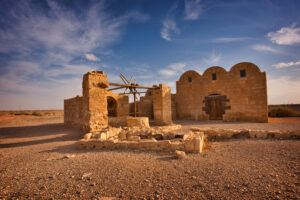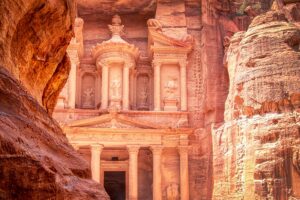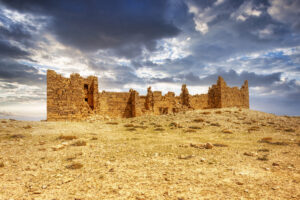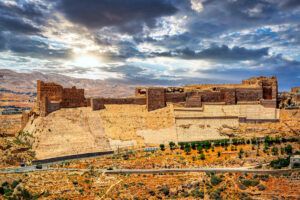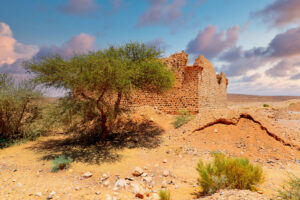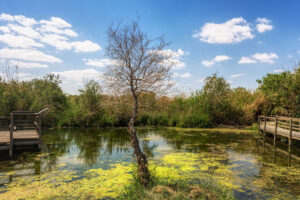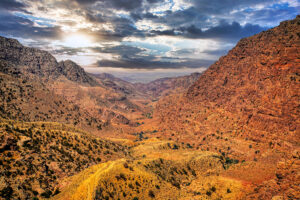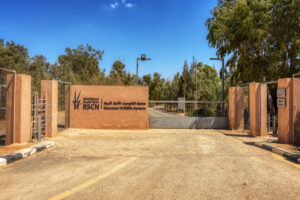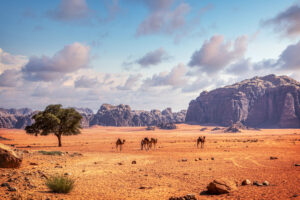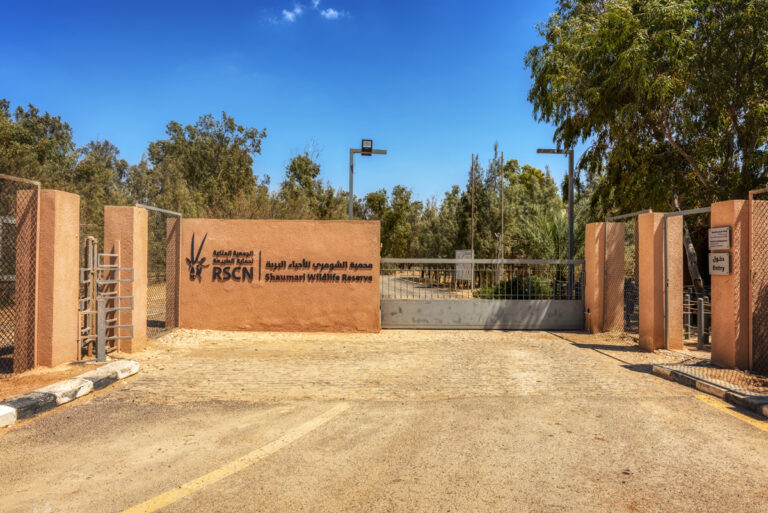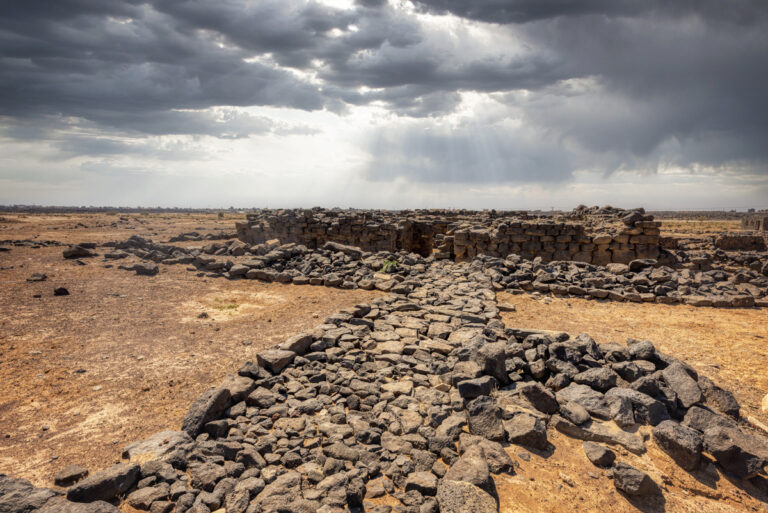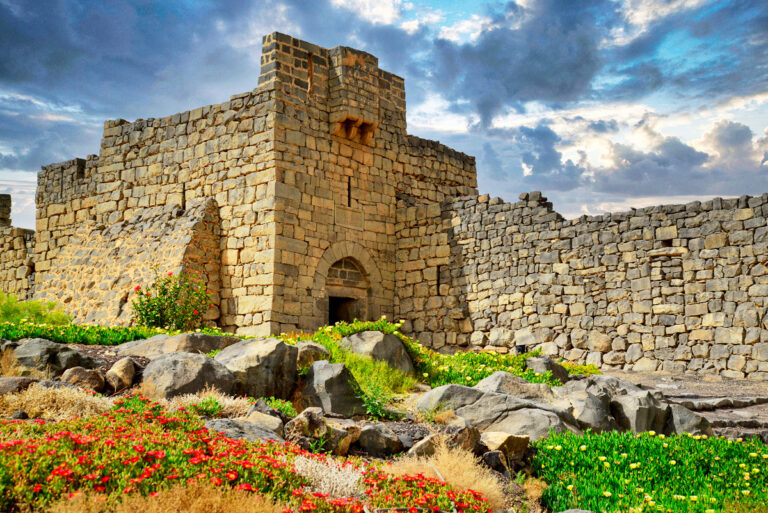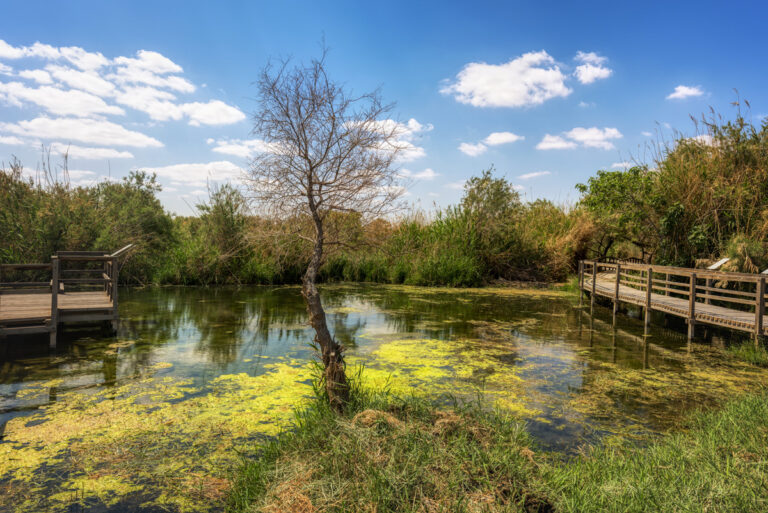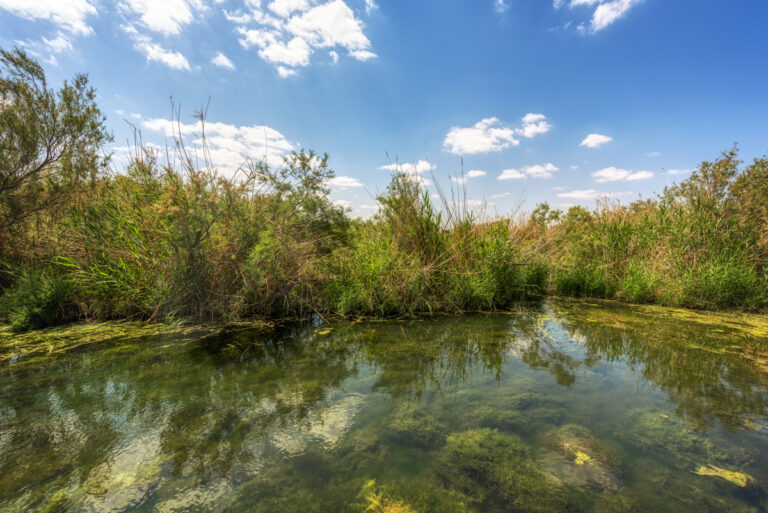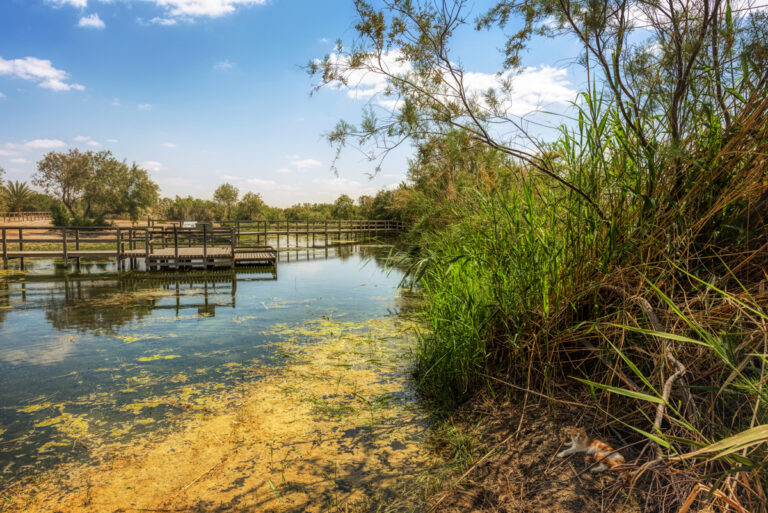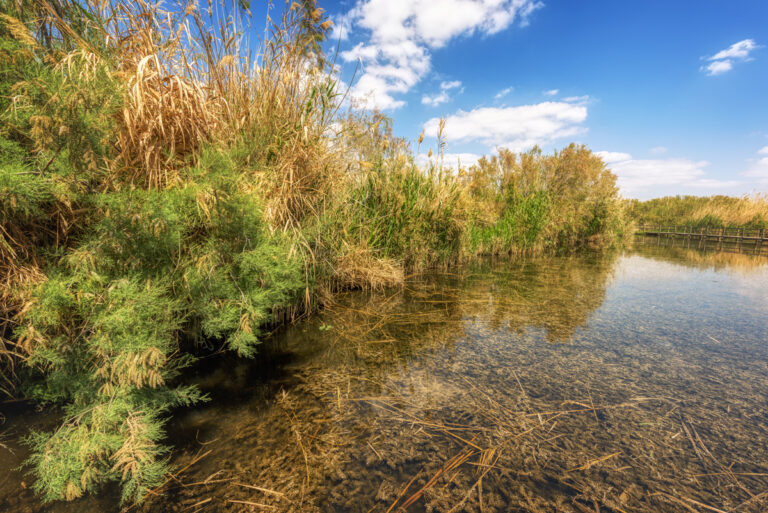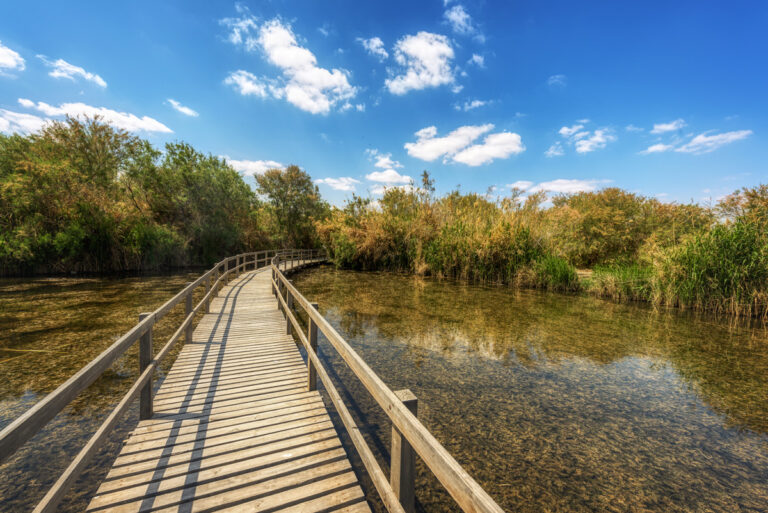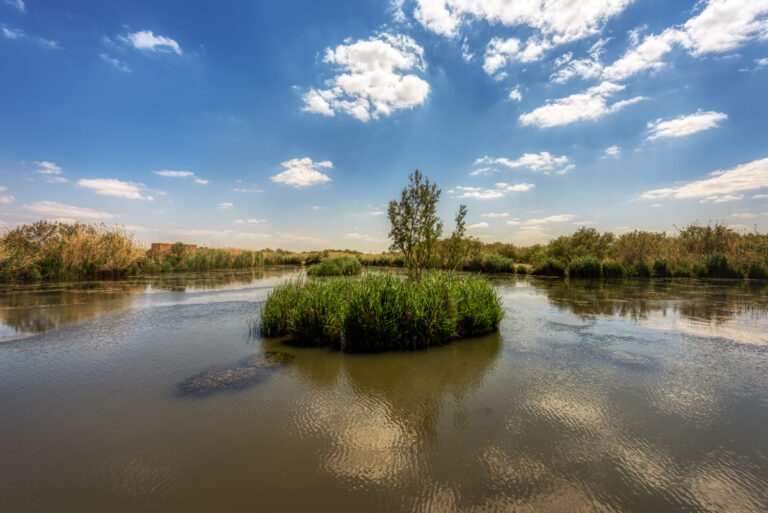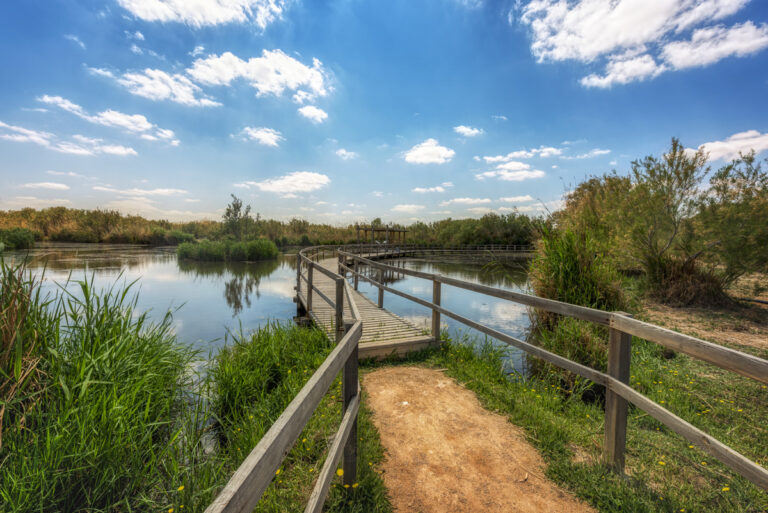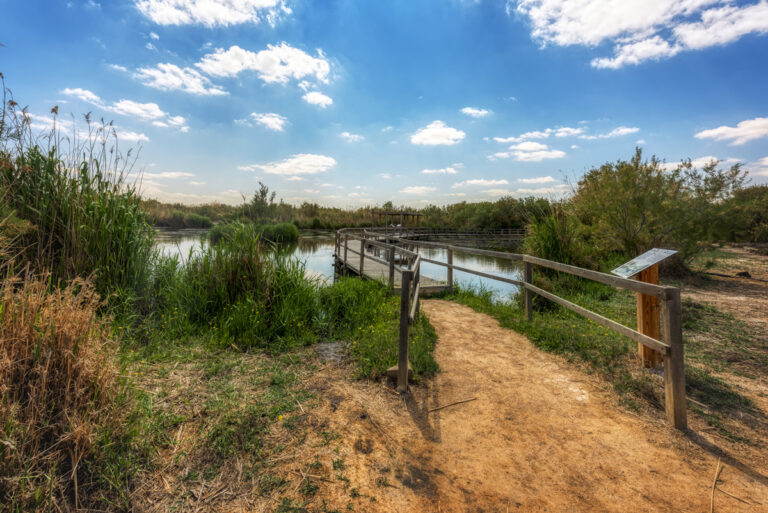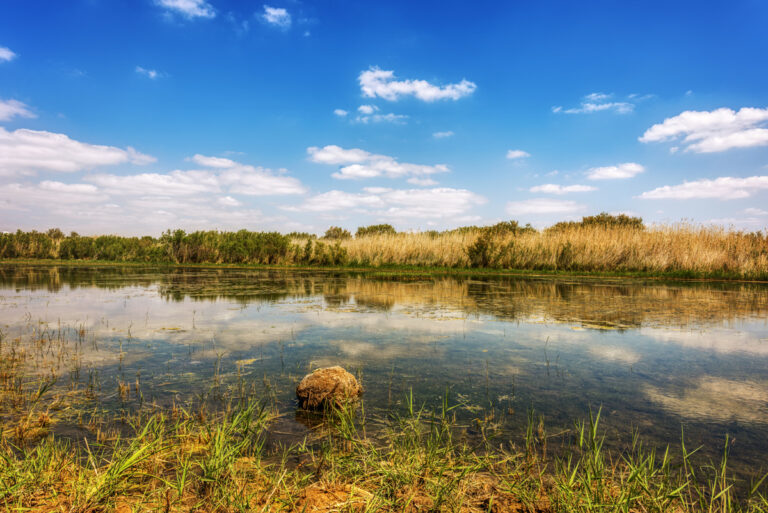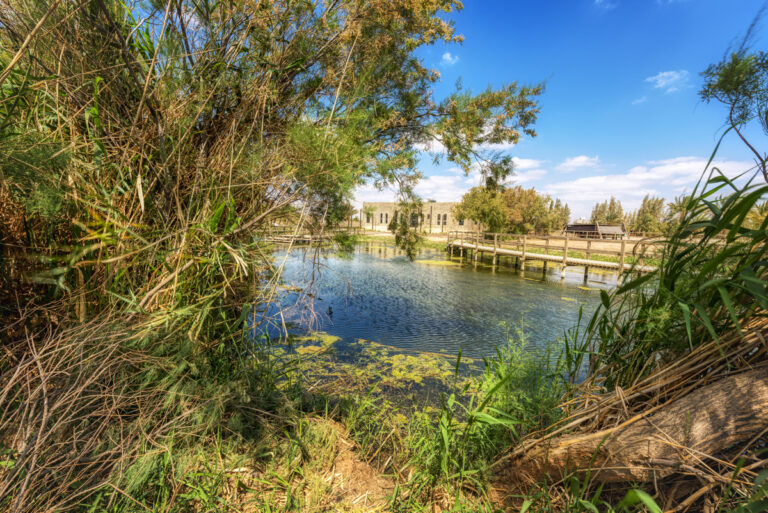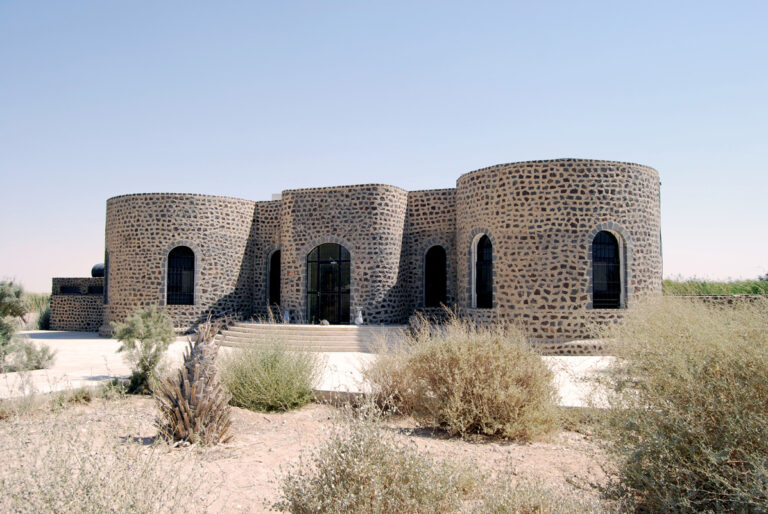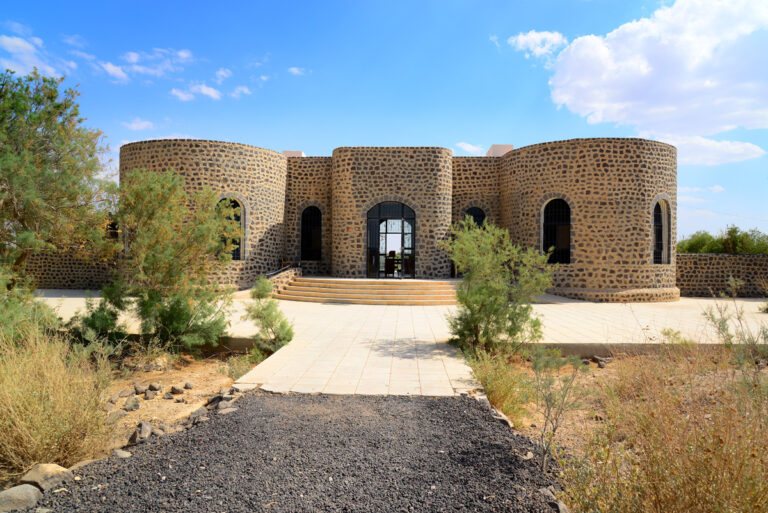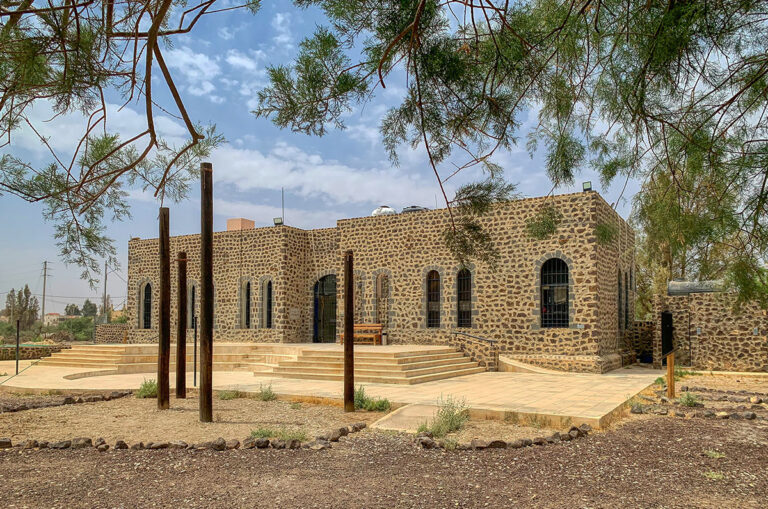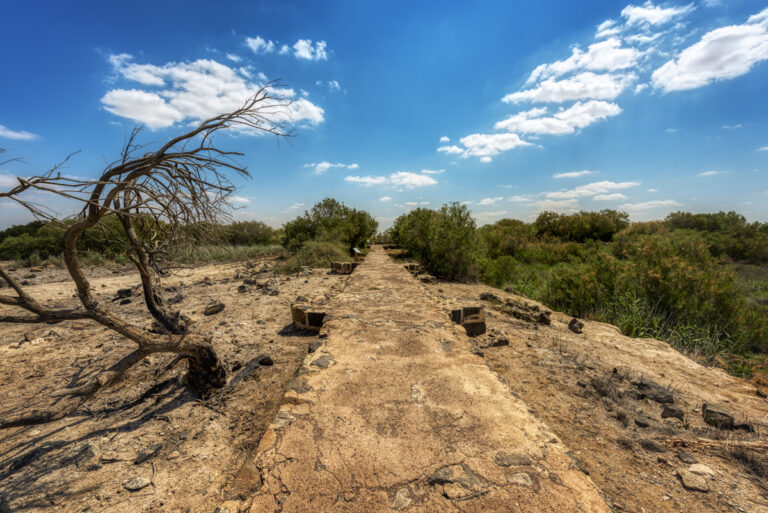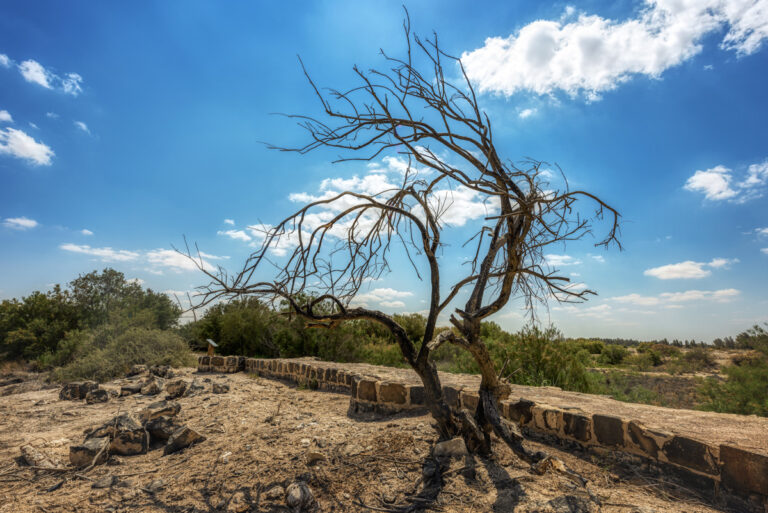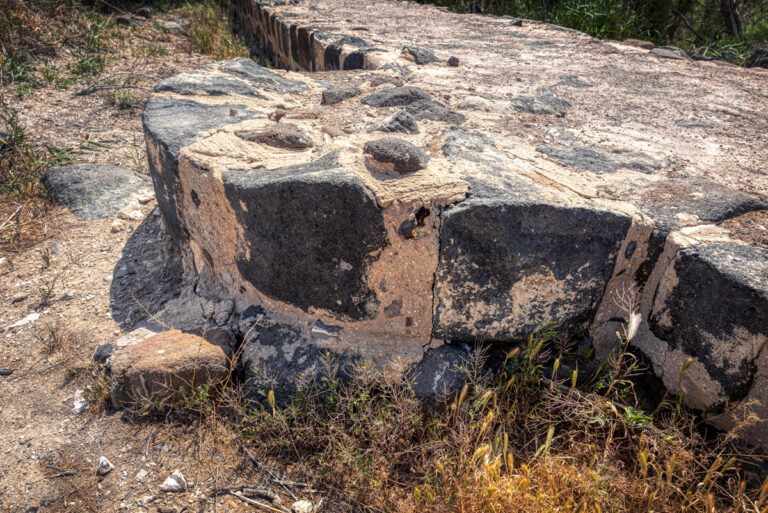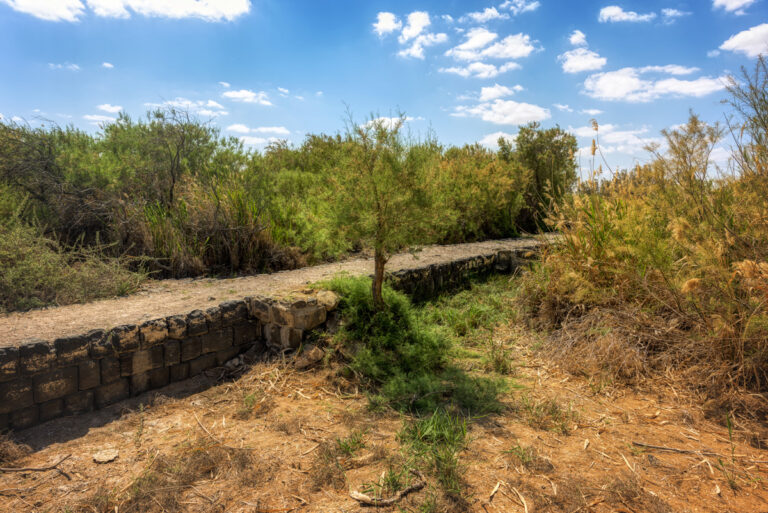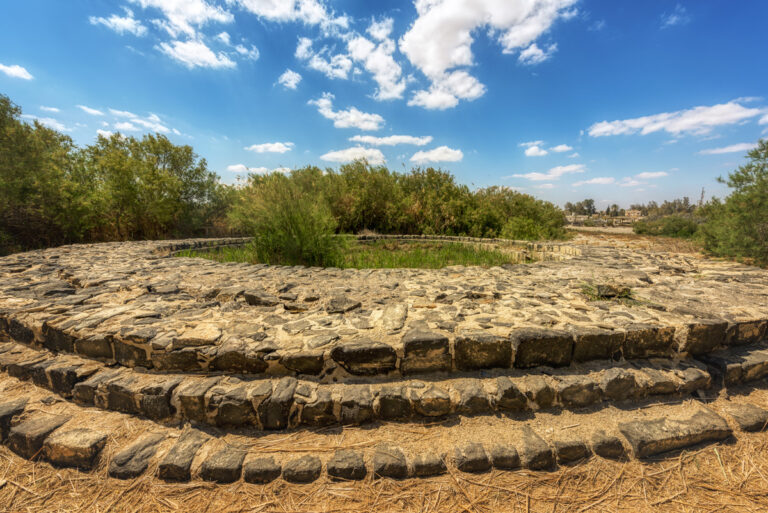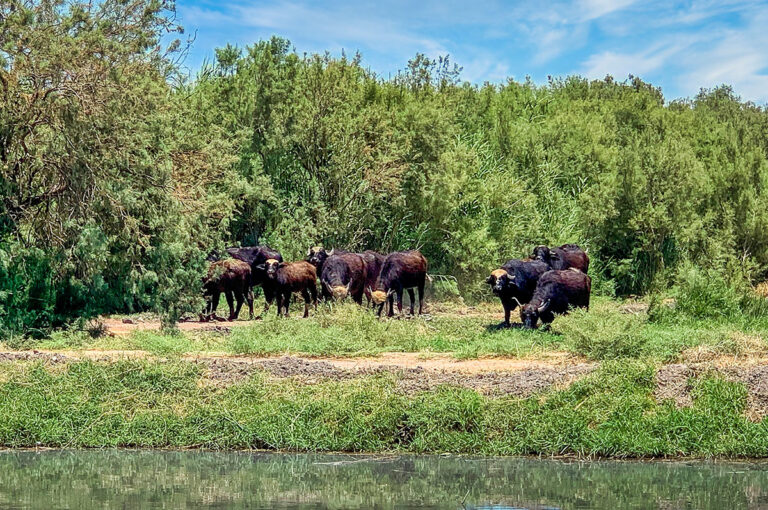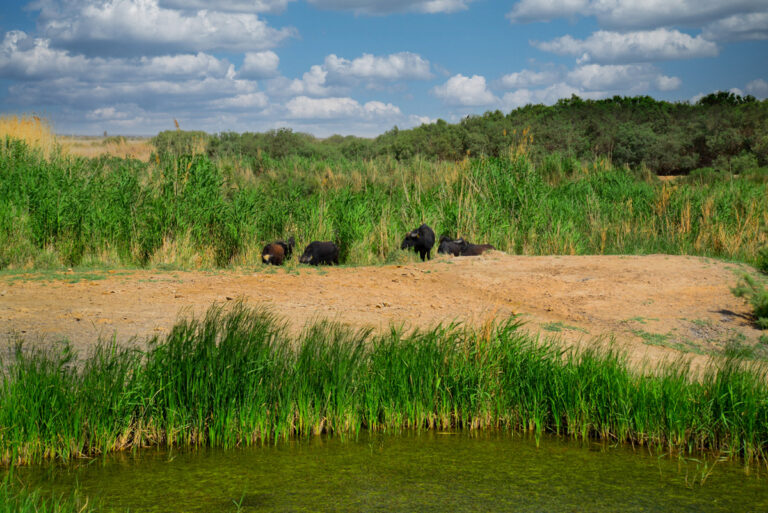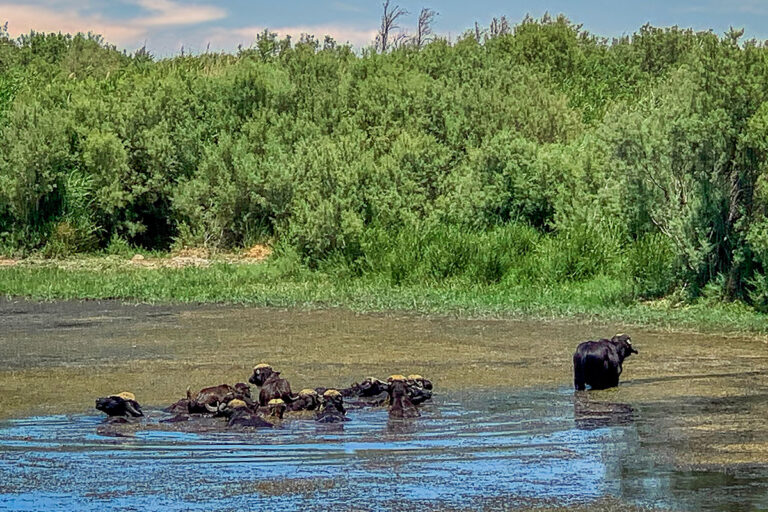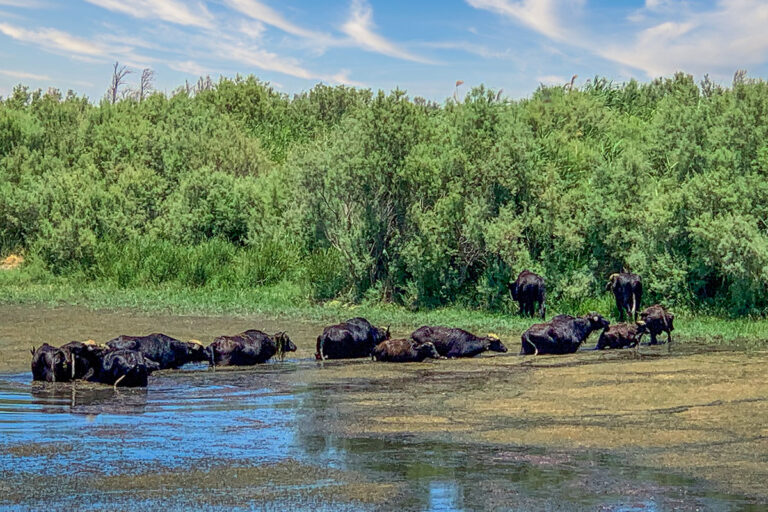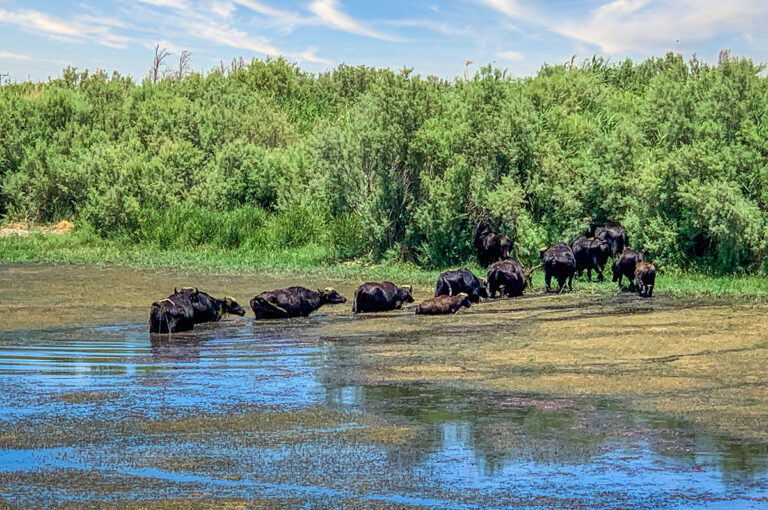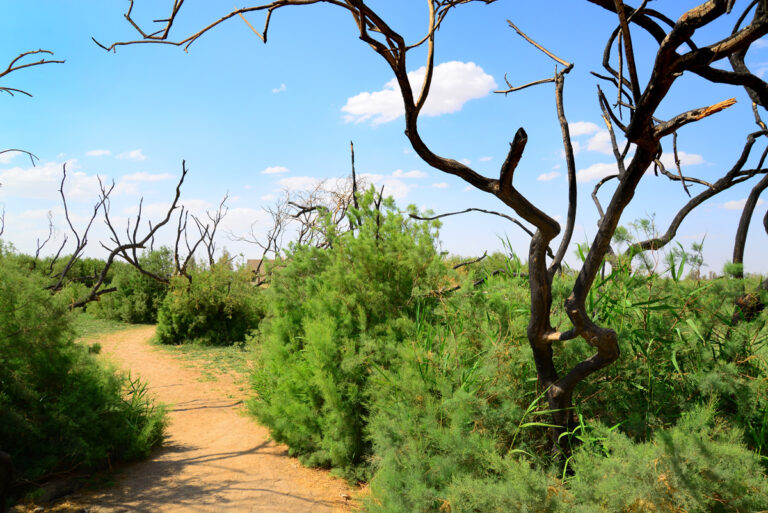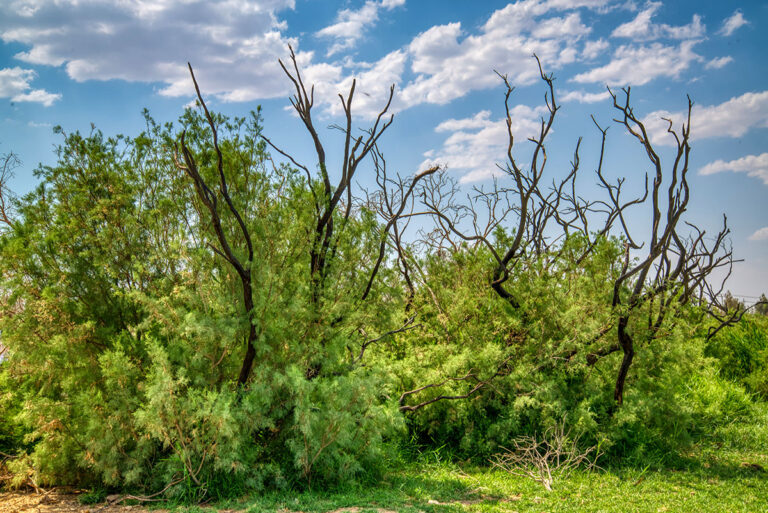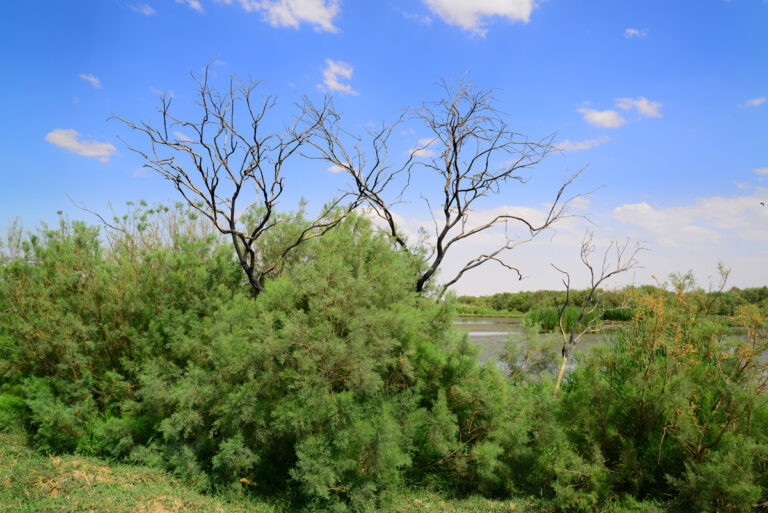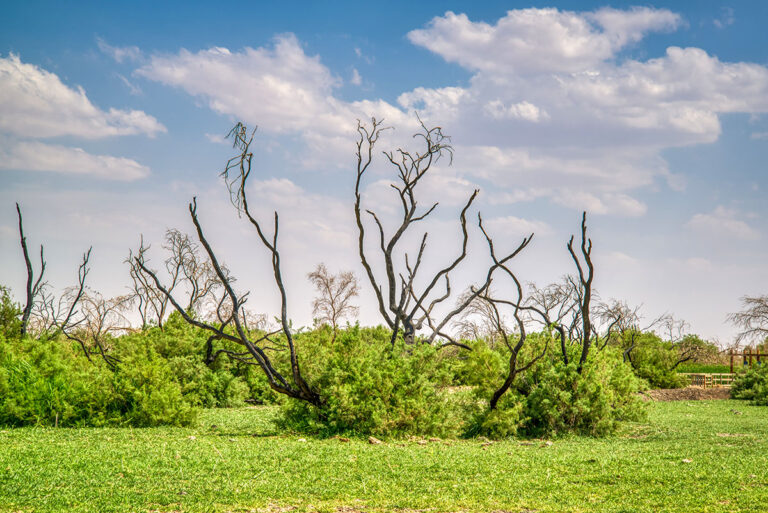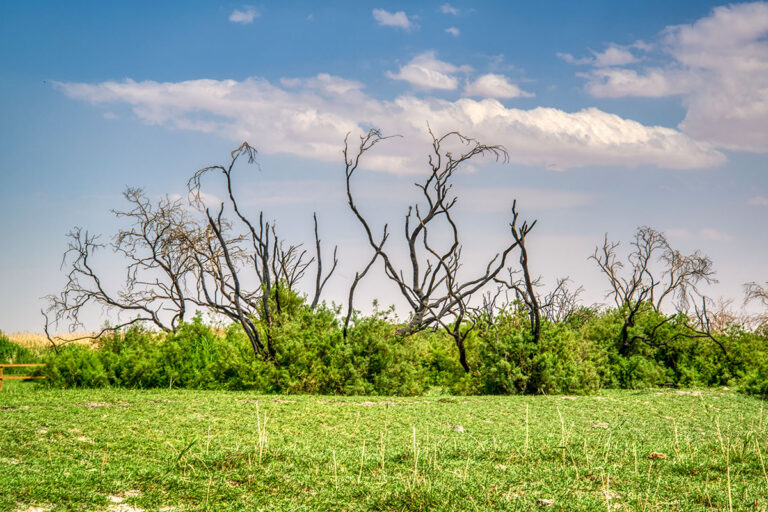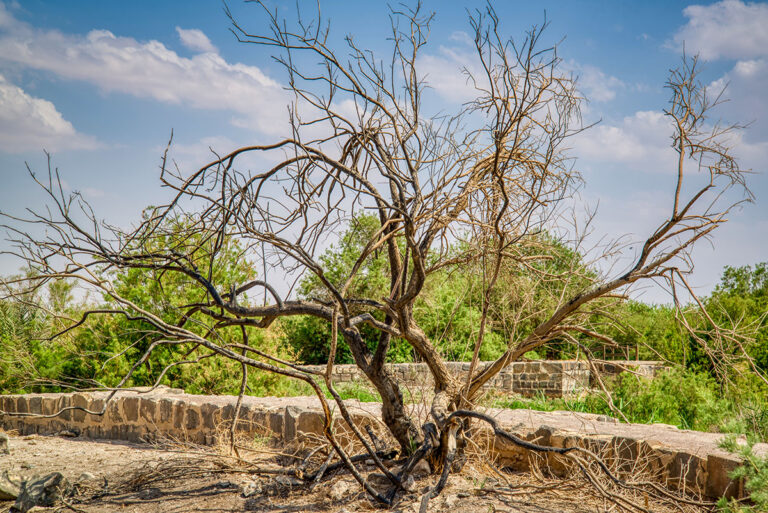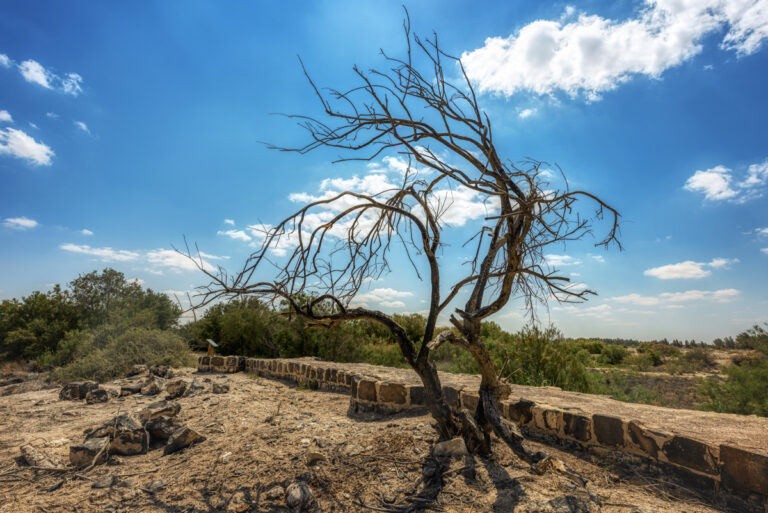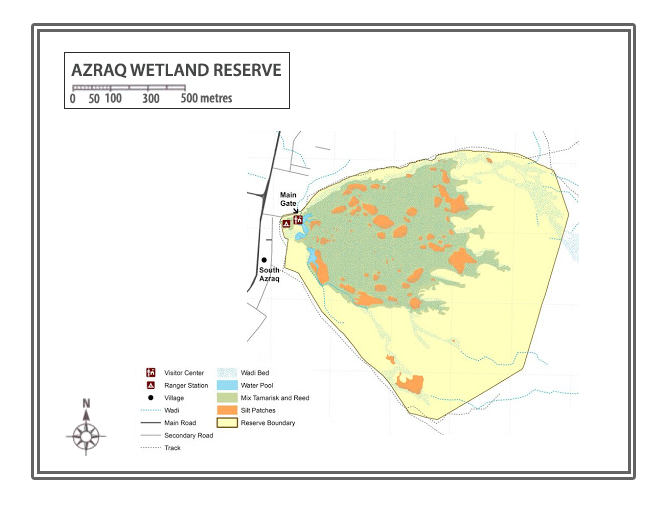The Azraq Wetland Reserve is a rare haven of life nestled in Jordan’s arid Eastern Desert. Located near the town of Azraq and the storied Azraq Castle, this oasis once teemed with biodiversity, offering refuge to countless aquatic and terrestrial species. Of particular note is the Azraq Killifish, Jordan’s only true endemic vertebrate, a testament to the reserve’s ecological importance.
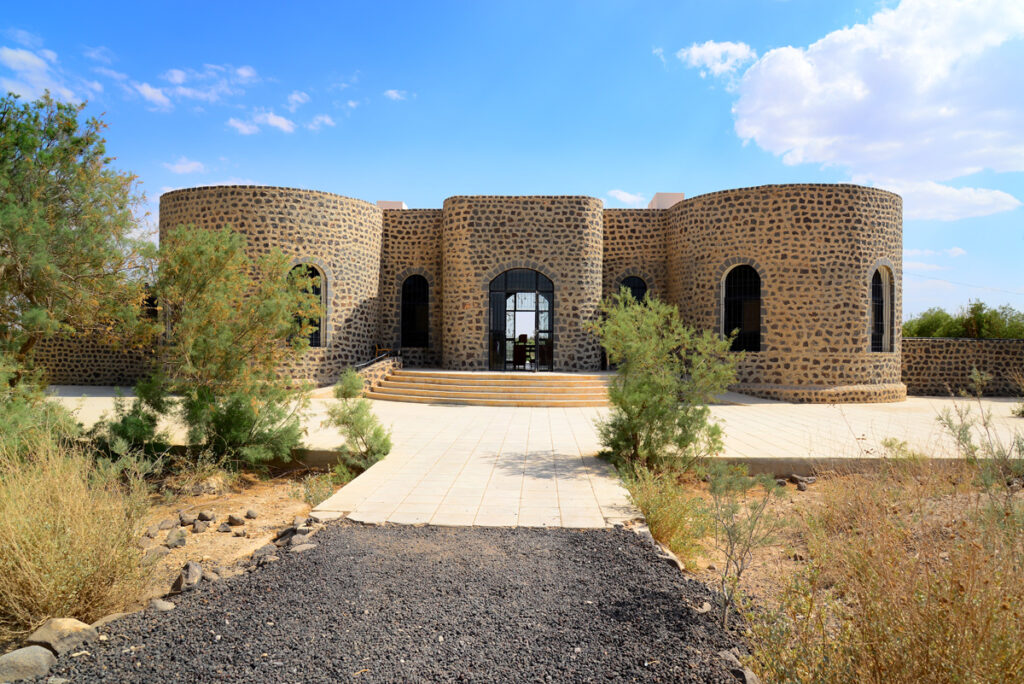
The Reserve, established by the RSCN in 1978, once played a key role as a migratory waypoint on the African-Eurasian flyway. Unfortunately, the oasis suffered a devastating blow in 1992 when overpumping of its natural springs for urban water supply caused them to dry up. The loss was stark and swift, with most migratory birds abandoning the area. Today, artificial springs sustain what remains, allowing visitors to glimpse a fragment of its former splendour.
A stroll along the 1.5km Marsh Trail offers a poignant window into the wetland’s past glory. Winding through paths trodden by water buffalo, this trail allows explorers to experience the sights and sounds of this extraordinary place. With binoculars in hand, visitors can observe ducks squabbling among reed beds from a bird hide or watch over the Shishan Springs, historically the lifeblood of the wetlands. The thick reeds, rustling in the wind, create a tranquil illusion that almost belies the harsh desert environment nearby.
Adding historical intrigue, visitors may encounter the remains of a basalt wall from the Umayyad period, part of a once grand aqueduct stretching 4 km. Though its exact purpose remains uncertain, theories suggest it was a sophisticated system for water control and storage, potentially separating fresh and saltwater.
Intricately carved basalt stones found nearby depict animals and plants that flourished here long ago, offering a glimpse into Azraq’s verdant history.
While less than a fraction of the original wetland remains, the reserve continues to support approximately 300 bird species during winter migrations from Europe to Africa. These include raptors, warblers, eagles, and plovers, with the winter months and early spring offering the best birdwatching opportunities. Occasionally, water buffalo can still be seen wallowing in the marshes, and nocturnal visitors might glimpse jackals or gerbils. However, the survival of this delicate ecosystem remains precarious, with water levels still heavily impacted by ongoing overpumping.
The RSCN launched a rescue operation in 1994 with international backing, striving to restore depleted wetland areas and increase water levels by 10%. Progress has been slow due to resource limitations and the challenges of wetland management, but their efforts have borne some fruit. Birds that once defined Azraq are beginning to return, hinting at the reserve’s potential resurgence. A notable success came in 2017 with the restoration of a new basin, known as the Swiss Pond, funded by international supporters. Water flowed back into the land, offering a glimmer of hope for this beleaguered paradise.
Though the Azraq Wetland Reserve remains a shadow of what it once was, its resilience showcases the power of conservation. This oasis, at the heart of the desert, continues to inspire and remind us of the urgent need to protect the delicate balance of nature for generations to come.
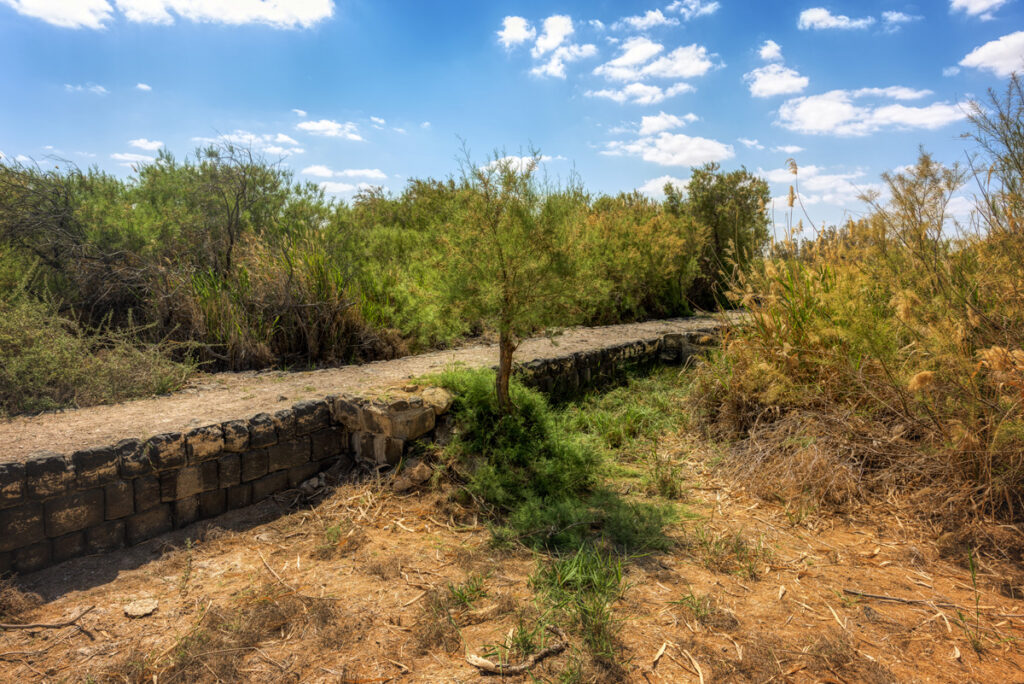
Key Moments in History
Early Significance as an Oasis: Azraq Wetland Reserve served as a crucial water source and stopover for migratory birds, as well as a vital resource for ancient human settlements in the region.
20th Century Depletion: Over-extraction of water in the 1980s for agricultural and urban purposes led to the severe drying of the wetlands, threatening the ecosystem and its wildlife.
Key Moments in History
Early Significance as an Oasis: Azraq Wetland Reserve served as a crucial water source and stopover for migratory birds, as well as a vital resource for ancient human settlements in the region.
20th Century Depletion: Over-extraction of water in the 1980s for agricultural and urban purposes led to the severe drying of the wetlands, threatening the ecosystem and its wildlife.
Establishment of the Reserve (1978): The Royal Society for the Conservation of Nature (RSCN) designated Azraq as a wetland reserve to protect its unique biodiversity and restore its ecological balance.
UNESCO Recognition: Azraq became part of the Ramsar Convention on Wetlands of International Importance, highlighting its role as a sanctuary for migratory birds.
Restoration Efforts (1990s-2000s): Intensive efforts were made to re-flood parts of the wetland by reducing over-pumping, leading to the gradual revival of plant and animal life.
The Return of Key Species: Conservation efforts saw the reappearance of rare bird species, as well as the introduction of the Azraq Killifish and other native fauna critical to the ecosystem.
Community Engagement Projects: Local communities were involved in sustainable tourism and environmental programs, promoting conservation as well as economic support for the region.
Present-Day Ecotourism Hub: Azraq now thrives as a sanctuary for nature lovers and birdwatchers, representing a successful case of ecological restoration and a model for sustainable conservation.
